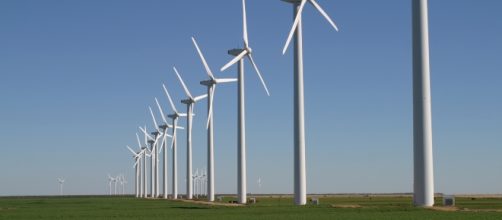When President Donald Trump pulled out of the Paris Climate Accord, informed opinion suggested that the end of the world was nigh. Without official federal government policies encouraging lower Carbon Emissions, climate change caused by human action would proceed apace with resulting disasters decades hence.
But the Washington Times suggests that the United States is already lowering carbon emissions, 11 percent below 2005 levels as of 2015. The United States will not reach the Paris mandated goal of a 26 percent reduction by 2025, but that was likely impossible even with a strict federal policy anyway.
19 percent seems to be more doable. So why is the United States headed for a lower carbon future?
Natural gas is replacing coal
Thanks to the fracking boom, natural gas has become plentiful and cheap. Natural gas, while a fossil fuel, is far cleaner burning than coal. Thus, a number of utilities are switching from coal burning plants to those that operate on natural gas. Thanks to loosened restrictions on drilling and fracking on public lands, the supply of gas is likely to increase in the future.
Renewable energy is becoming cheaper
Technological advances are making wind and solar power cheaper and therefore more attractive. The situation in Texas is a case in point. Texas, best known an oil and gas state, has developed a vigorous wind energy industry.
Utilities are planting wind turbine farms in the western and northern part of the state with power lines connecting them to energy-hungry cities such as Dallas and Houston in the center and eastern regions. Texas is the number one wind energy state in the union.
Solar is just getting started as a major industry in the Lone Star State. While states like California have jumped started a solar energy sector with generous subsidies, Texas is starting to get into the technology because the efficiency of solar cells to convert light to electricity has increased enough to make economic sense. Both utility sized and rooftop solar systems are on the rise.
The nuclear, fusion, and electric car wild cards
Nuclear power has seen better days in the United States. However, despite safety concerns about the method of generating electricity, some public policy leaders have noticed that nuclear power is also carbon free. Energy Secretary Rick Perry, the former governor of Texas, has suggested that nuclear will be part of the federal government energy strategy. This attitude is critical since absent any new initiatives, nuclear power is set to decline as aging plants start to go offline.
Fusion power is the real wild card. Some evidence suggests that researchers are finally in sight of creating a controlled fusion reaction that generates more energy than it takes to sustain it.
Commercial fusion energy would be a game changer in altering the way electricity is generated.
The proliferation of electric cars is likely to contribute to a reduction in carbon emissions. However, the trick is having them plug in for a recharge to energy sources that do not emit carbon dioxide. The purpose of electric cars as a carbon emissions reducer will be defeated if they run, essentially, on coal.


